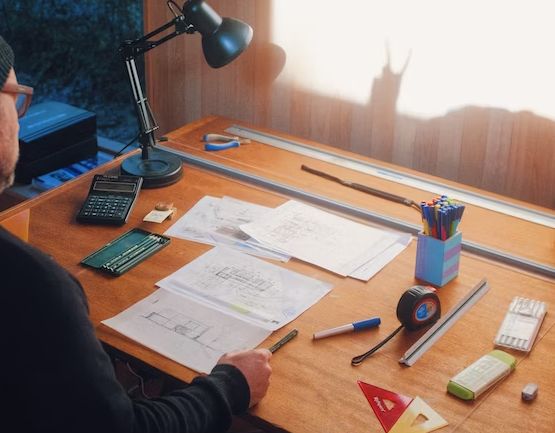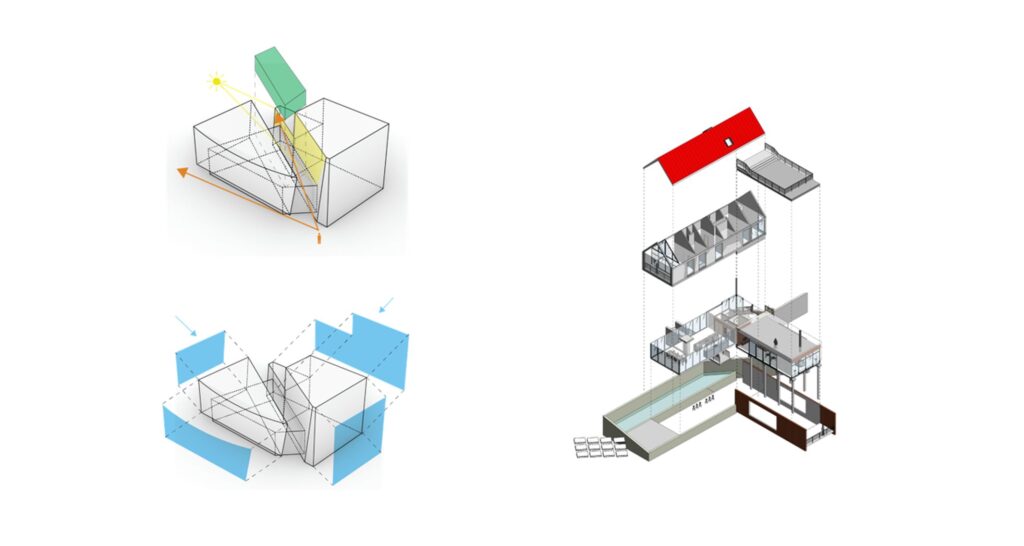The Architect’s Guide To Remote Work
Introduction:
As a result of the global COVID-19 pandemic, remote work has become the norm for professionals in a variety of fields. Architects, who are renowned for their collaborative nature and reliance on face-to-face interactions, have also had to adapt to this digital revolution. Remote work presents architects with unique challenges, but also numerous opportunities for innovation and professional development. In this guide, we will examine the key strategies and best practices that architects can use to thrive in a remote work environment.

Establishing an Efficient Remote Workspace:
The first step in adapting to remote work is creating an efficient workspace at home. Designate a space where you can work undisturbed, preferably with adequate lighting and minimal ambient noise. Invest in ergonomic furniture and equip your computer with the design software and tools necessary to maintain productivity. Additionally, ensure that you have a dependable internet connection and the necessary hardware to collaborate with your team effectively.

Embracing Collaboration Tools and Technology:
Architects heavily rely on collaboration and communication with team members, clients, and contractors. There exists an abundance of digital tools and software to facilitate virtual collaboration. Slack, Microsoft Teams, and Zoom are platforms that can be used for real-time communication, video conferencing, and file sharing. Virtual whiteboards and project management software, such as Trello and Asana, assist in streamlining workflow and ensuring that everyone is on the same page.

Maintaining Effective Communication:
Clear and consistent communication is crucial for successful remote collaboration. Establish regular check-ins with your team in order to discuss project updates, address any issues, and maintain a sense of connection. Utilize video calls whenever possible to create a more engaging and personal environment. Encourage channels of communication that are open and transparent to ensure effective feedback loops and constructive discussions.

Adapting the Design Process:
Remote work may require architects to adjust their traditional design process. Using collaborative platforms, team members can share ideas, sketches, and concepts while participating in virtual brainstorming and charrettes. Utilize digital modeling and rendering tools to effectively create and present design iterations. In addition to enhancing remote design reviews and client presentations, virtual reality (VR) and augmented reality (AR) technologies can also improve remote design reviews.

Time and Project Management:
Remote work can blur the boundaries between personal and professional life. To maintain a healthy work-life balance, establish a clear schedule and set boundaries. Utilize project management tools to monitor progress, delegate tasks, and establish due dates. Projects should be broken down into smaller, more manageable tasks to increase productivity and prevent feeling overwhelmed. Reevaluate and reorder your tasks frequently to ensure that you remain on track and meet project milestones.

Nurturing Professional Development:
Working remotely provides architects with an opportunity to invest in their professional development. Participate in webinars, online courses, and virtual conferences to keep abreast of industry developments and trends. Join online communities and forums to exchange knowledge and ideas with other professionals. Remote work can foster self-discipline and independent learning, allowing architects to increase their expertise and skills.

Cultivating a Strong Team Culture:
Maintaining a sense of camaraderie and team spirit is essential for remote teams. Organize virtual team-building activities, such as online games or shared virtual experiences, to promote a positive team culture. Personal and professional milestones and accomplishments should be celebrated to foster a sense of accomplishment and motivation within the team. Encourage channels of informal communication for water cooler conversations and social interactions.
Conclusion:
Remote work for architects is now a reality, and embracing the opportunities it presents can lead to a successful and fulfilling career path. Architects can overcome the challenges of remote work and thrive in the digital world by establishing an effective remote workspace, leveraging collaboration tools, adapting the design process, and fostering professional development. Embrace
Check out these design skills to improve your office or at home productivity


